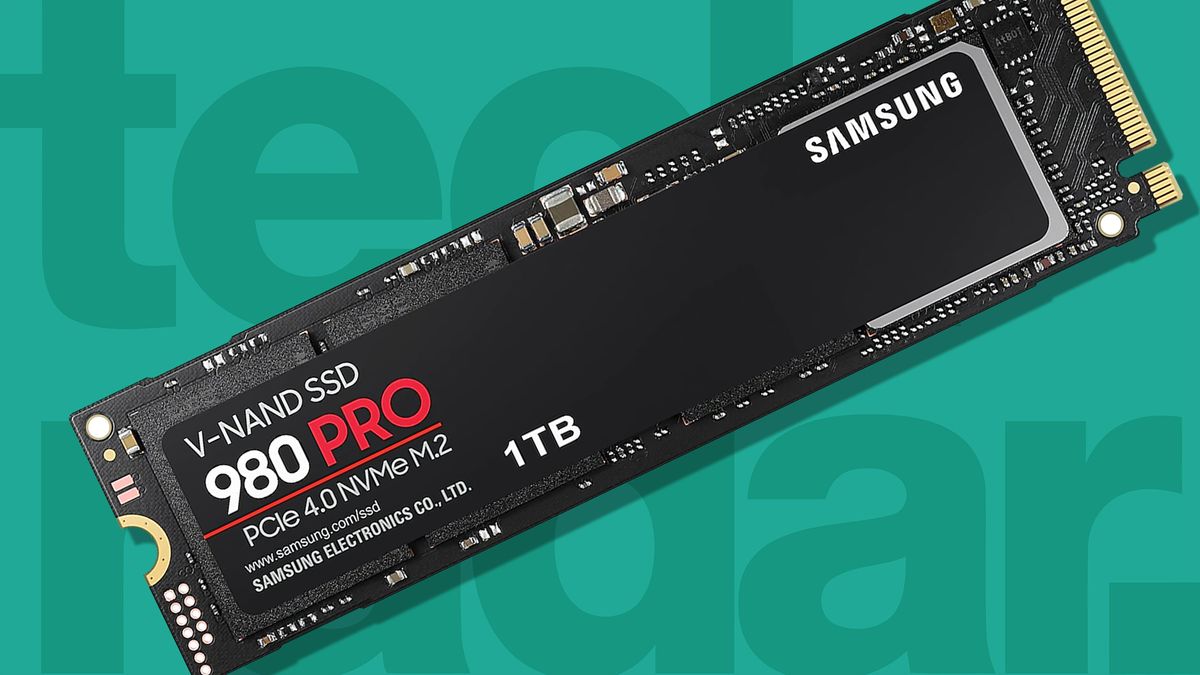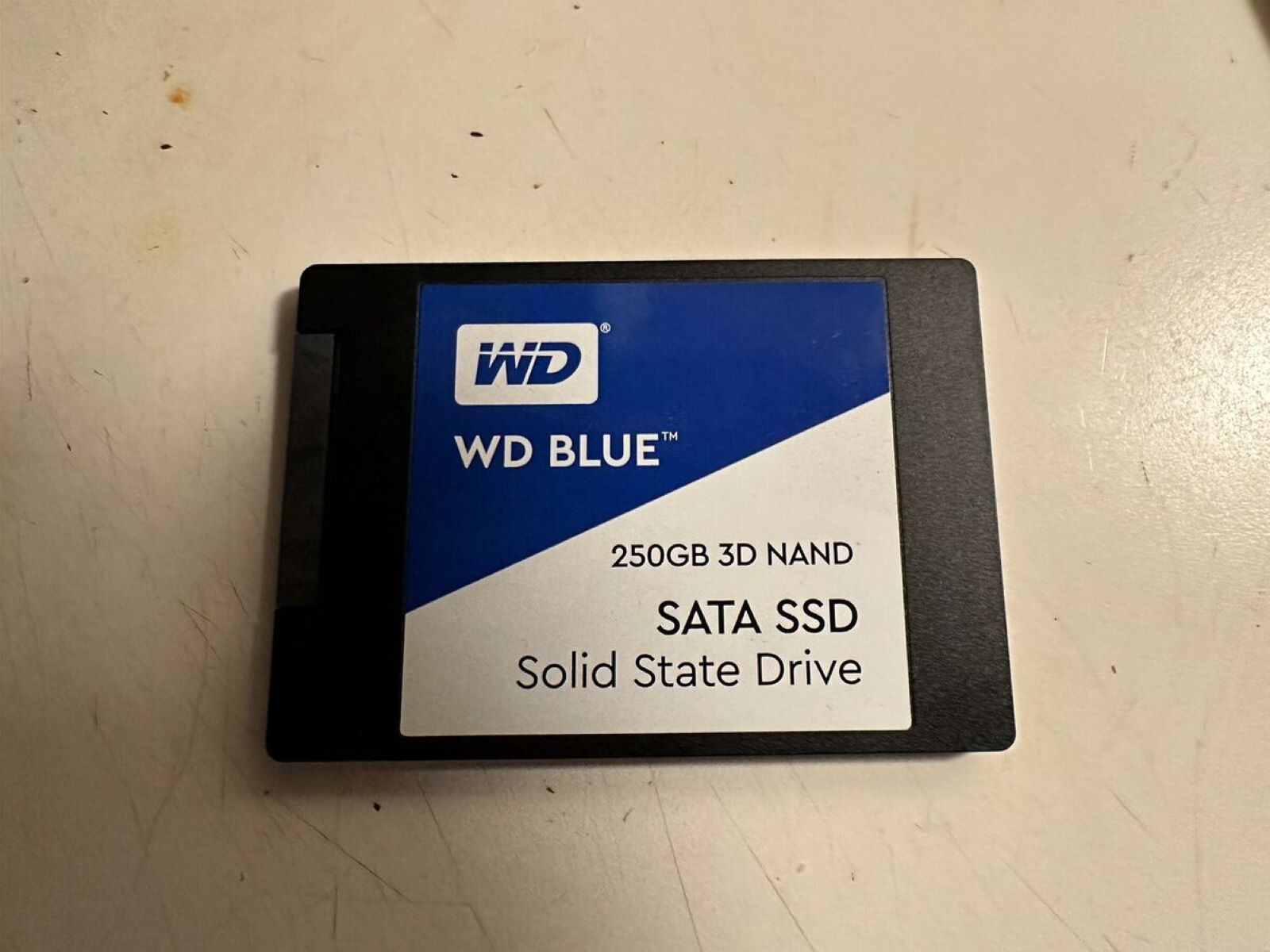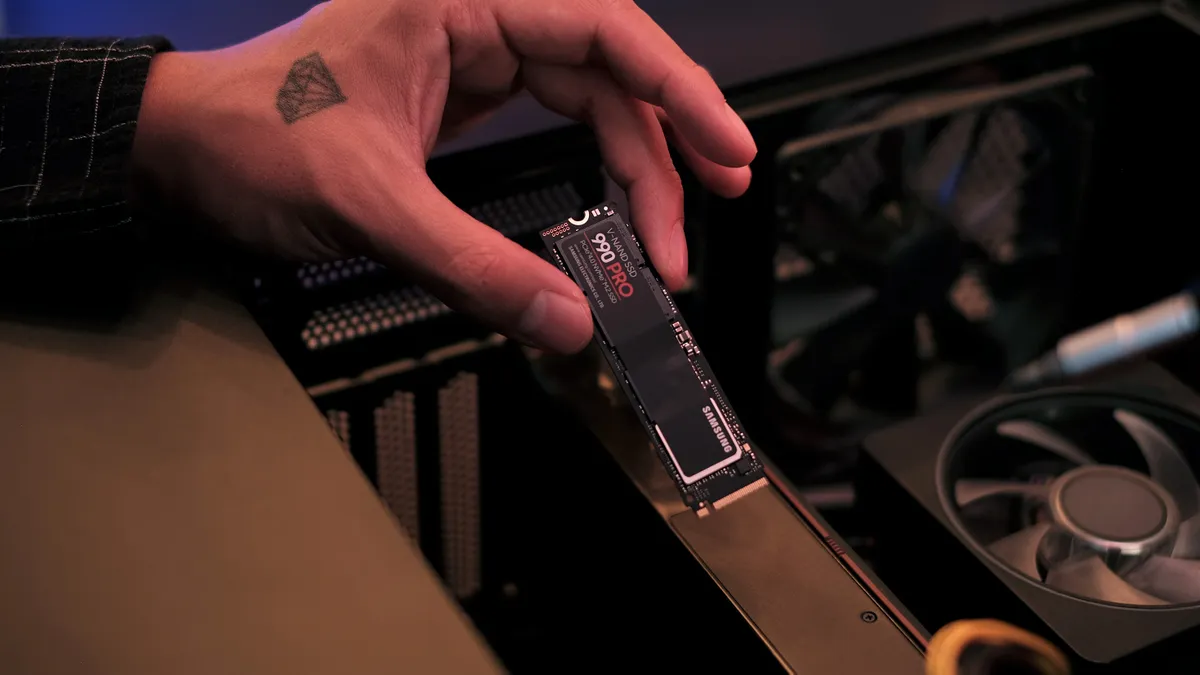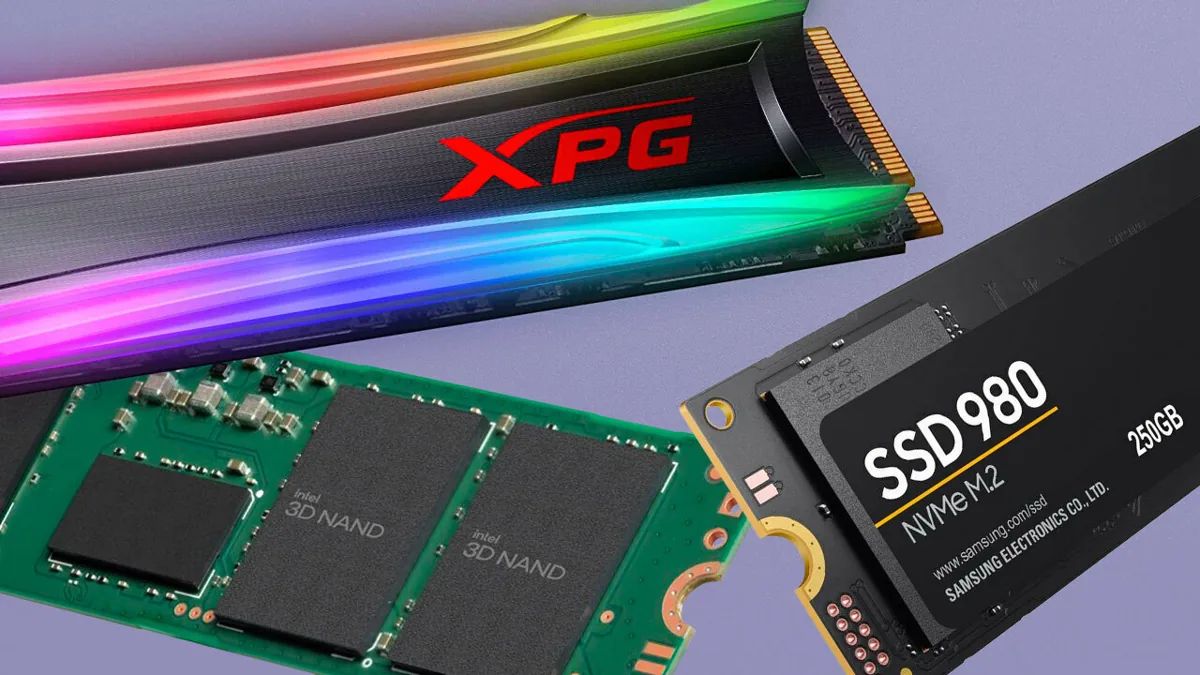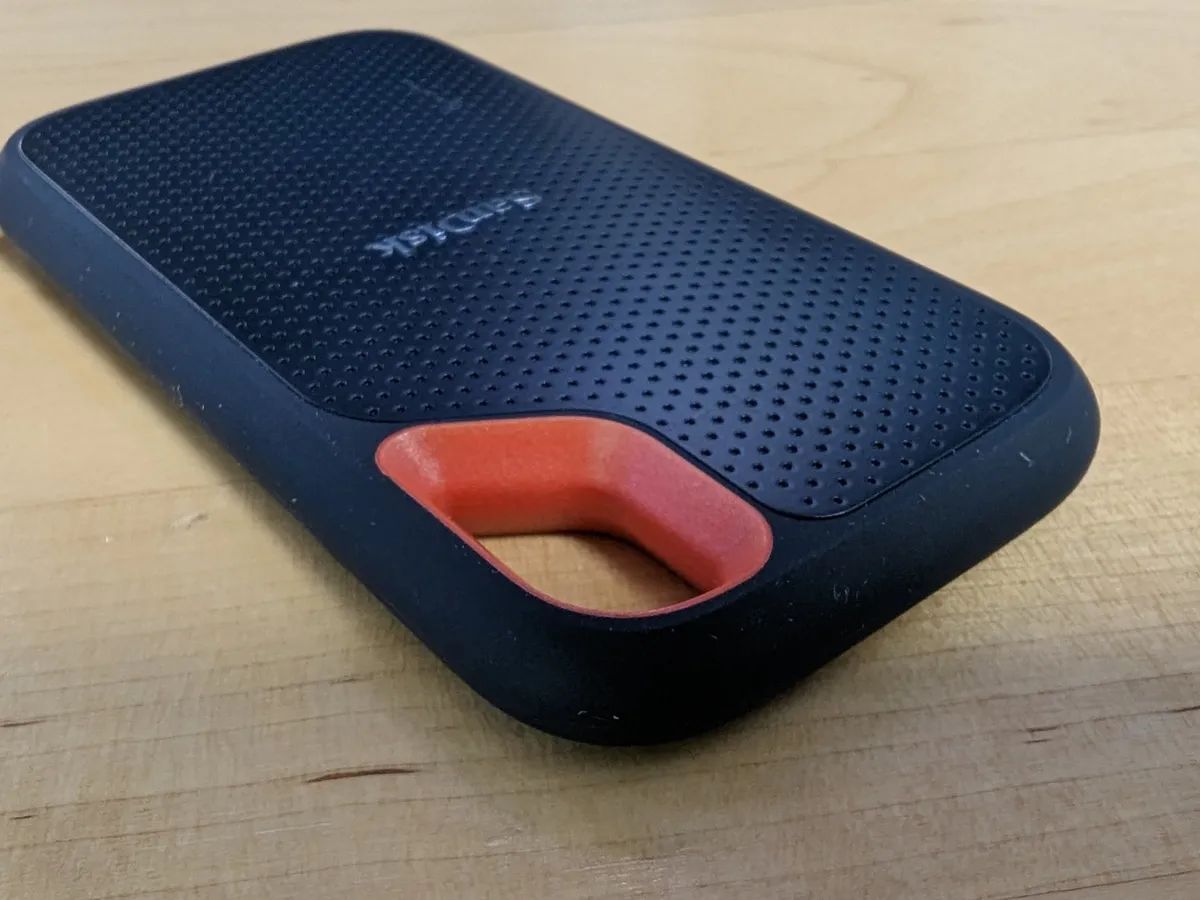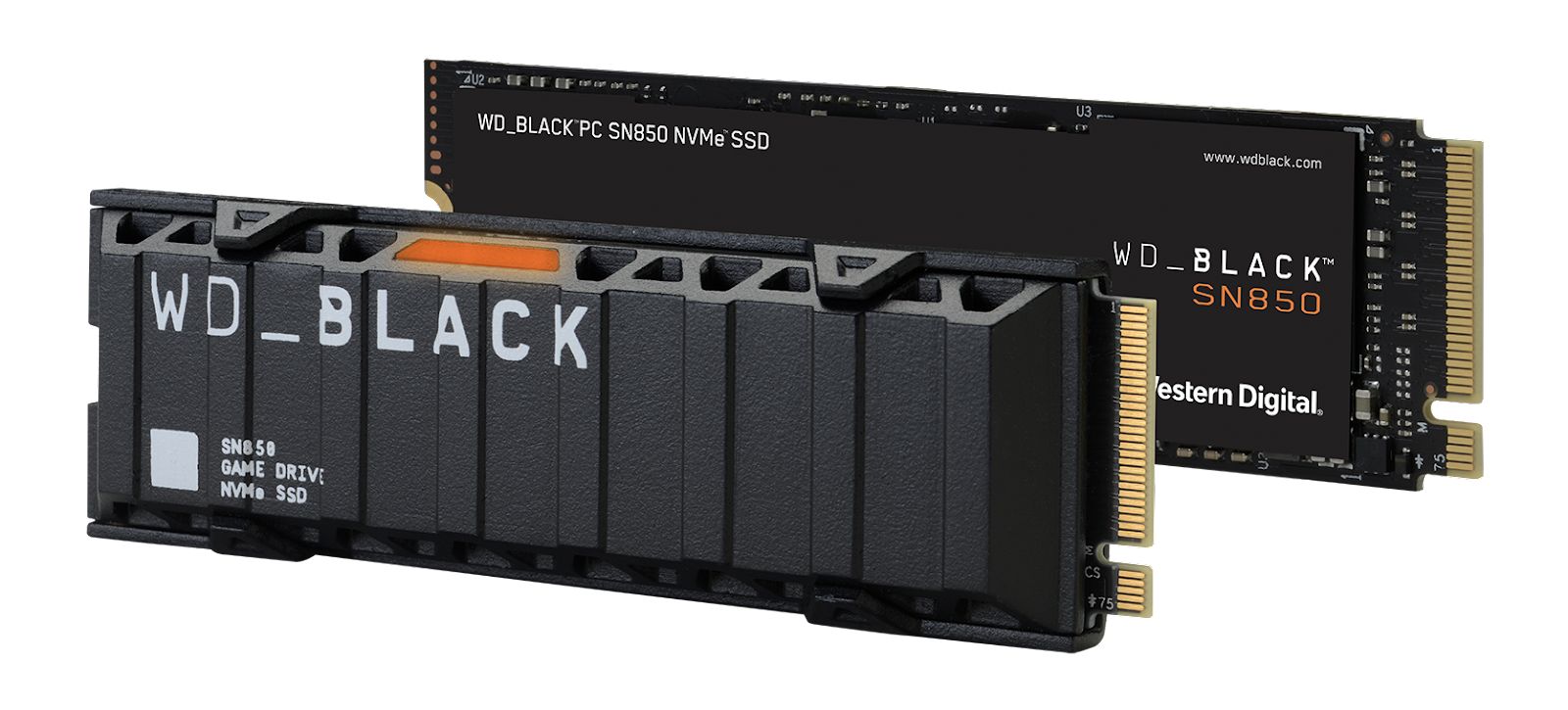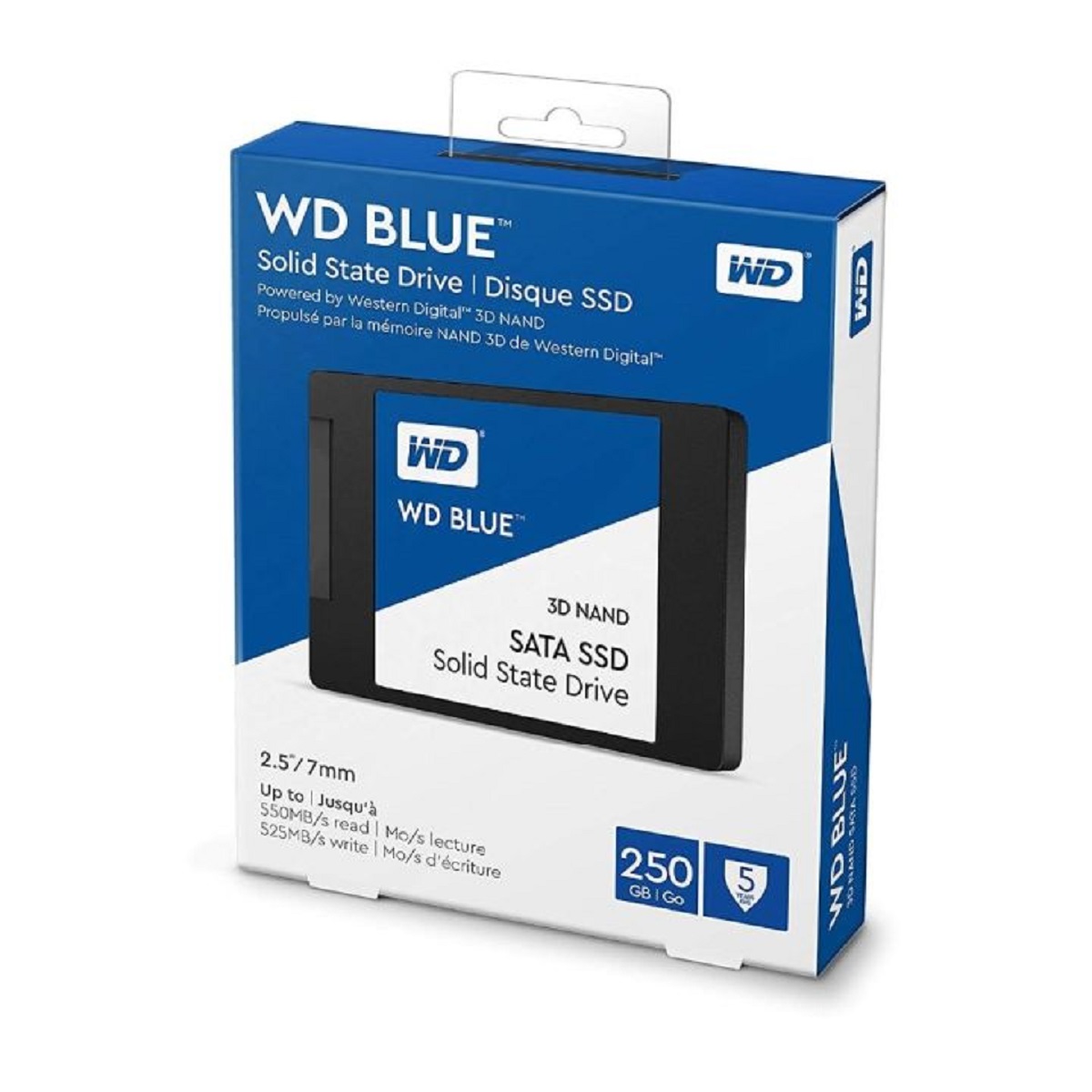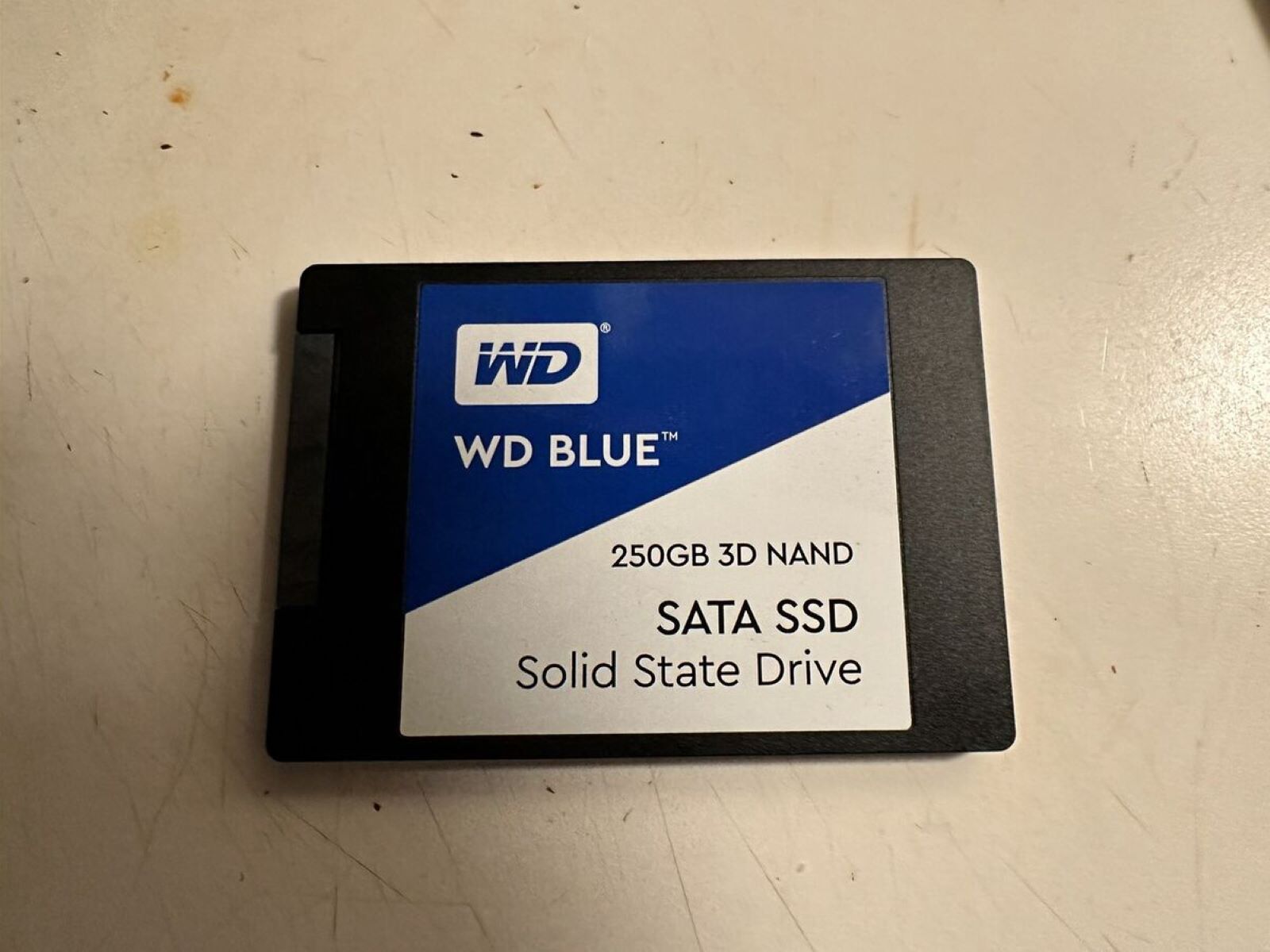Introduction
Welcome to our article on the longevity and lifespan of the 250GB Samsung 960 Evo M.2 NVMe Solid State Drive. In today’s technology-driven world, data storage and access have become more crucial than ever. With the advent of high-performance solid-state drives (SSDs), users are increasingly turning to these devices for faster data transfer speeds and improved reliability.
In this article, we will explore the lifespan of the Samsung 960 Evo M.2 NVMe SSD and discuss the factors that can affect its durability. Additionally, we will delve into the concept of write endurance and how it plays a significant role in determining how long an SSD will last. We will also provide some real-world scenarios to help you estimate the lifespan of a 250GB Samsung 960 Evo SSD under different usage patterns.
It’s important to note that the lifespan of an SSD is not solely determined by its capacity or brand. Several factors, such as usage patterns, environmental conditions, and maintenance practices, can significantly impact the longevity of an SSD. By understanding these factors and implementing best practices, you can effectively prolong the lifespan of your SSD and ensure optimal performance.
So, whether you are a gaming enthusiast, a professional content creator, or simply a tech-savvy individual looking for reliable storage solutions, this article will provide you with valuable insights into the lifespan of the 250GB Samsung 960 Evo M.2 NVMe SSD. Join us as we explore the world of SSD technology and shed light on how long you can expect this drive to last under various scenarios.
What is an M.2 NVMe Solid State Drive?
Before delving into the lifespan of the 250GB Samsung 960 Evo M.2 NVMe SSD, let’s first understand what an M.2 NVMe solid-state drive is and how it differs from traditional hard disk drives (HDDs). An M.2 NVMe SSD is a next-generation storage device that utilizes solid-state flash memory technology to store and retrieve data.
The M.2 form factor was developed to meet the increasing demand for smaller, more compact storage solutions. It is a small, rectangular-shaped module that connects directly to the motherboard of a device, offering significant space-saving advantages. NVMe (Non-Volatile Memory Express) is a protocol specifically designed for SSDs, offering lower latency and higher bandwidth compared to traditional SATA-based SSDs.
M.2 NVMe SSDs provide several advantages over HDDs. Firstly, they have no moving parts, making them more resistant to physical damage and less susceptible to mechanical failures. This results in improved reliability and durability. Secondly, M.2 NVMe SSDs offer significantly faster data transfer speeds, resulting in quicker boot times, faster file transfers, and improved overall system performance.
The 250GB Samsung 960 Evo M.2 NVMe SSD is a popular choice among users looking for a balance between affordability, performance, and capacity. It provides ample storage for operating systems, software applications, and frequently accessed data. With its advanced V-NAND technology and NVMe interface, the Samsung 960 Evo promises exceptional speed and reliability, making it an attractive option for a wide range of users.
In summary, an M.2 NVMe solid-state drive is a compact, high-performance storage device that offers faster data transfer speeds and improved reliability compared to traditional HDDs. The 250GB Samsung 960 Evo M.2 NVMe SSD, in particular, is a reliable and cost-effective option for those seeking efficient data storage and retrieval solutions. Now, let’s explore the lifespan of this SSD and the factors that can impact its durability.
Lifespan of an SSD
The lifespan of a solid-state drive (SSD) refers to the duration for which it can reliably function before encountering any significant issues or failures. Unlike traditional hard disk drives (HDDs) that rely on spinning platters and mechanical components, SSDs utilize flash memory chips to store data, resulting in faster access times and increased durability.
Compared to HDDs, SSDs generally have a longer lifespan due to their lack of moving parts. This means that there are fewer components that can break or wear out over time, resulting in improved reliability and longevity. However, it’s important to note that SSDs have a finite number of write cycles, which can impact their lifespan.
The lifespan of an SSD is typically measured in terms of total bytes written (TBW) or drive writes per day (DWPD). TBW refers to the total number of data that can be written to the SSD before its cells start to degrade, while DWPD indicates the maximum amount of data that can be written to the drive each day without significantly impacting its lifespan.
On average, modern SSDs have a TBW rating that can range from hundreds of terabytes to several petabytes, depending on the drive capacity and technology used. This means that for a 250GB SSD with a TBW rating of 200TB, you can write up to 200TB of data to the drive before it starts to experience potential issues.
However, it’s important to note that the actual lifespan of an SSD can vary based on several factors. These include the type of NAND flash memory used (such as single-level cell or multi-level cell), the workload and usage patterns of the SSD, the operating temperature, and the efficiency of the SSD’s internal wear-leveling algorithms.
In general, consumer-grade SSDs are designed to last for several years under typical usage scenarios. However, enterprise-grade SSDs, which are built to handle heavy workloads and have higher TBW ratings, are often more durable and have longer lifespans. It’s worth considering these factors when selecting an SSD for your specific needs.
Now that we have learned about the general lifespan of an SSD, let’s dive into the write endurance of the Samsung 960 Evo M.2 NVMe SSD and how it impacts its durability.
Factors that Affect Lifespan
While SSDs offer improved durability and longevity compared to traditional hard disk drives (HDDs), several factors can influence their lifespan. Understanding these factors can help you optimize the usage of your solid-state drive and ensure its longevity.
1. Write Endurance: Write endurance refers to the maximum amount of data that can be written to a SSD before it begins to experience potential issues. This factor is typically measured in terabytes written (TBW) and varies depending on the SSD model and technology used. It is important to consider the write endurance of an SSD when estimating its potential lifespan.
2. Workload and Usage Patterns: The workload and usage patterns can have a significant impact on the lifespan of an SSD. Heavy workloads, such as constant data transfers or running resource-intensive applications, can result in more write operations, reducing the lifespan of the drive. On the other hand, lighter workloads and regular power cycles can help prolong the SSD’s lifespan.
3. Operating Temperature: Operating temperature plays a crucial role in the lifespan of an SSD. Extreme temperatures, whether too hot or too cold, can affect the performance and durability of the drive. It is important to ensure proper thermal management by keeping the SSD within the recommended temperature range specified by the manufacturer.
4. TRIM Support: TRIM is a command that helps optimize the performance and lifespan of the SSD by informing the drive which data blocks are no longer in use. It allows the SSD to perform efficient garbage collection, ensuring that new data can be written to previously used blocks without any performance degradation. Ensuring that TRIM is enabled on your system can have a positive impact on the SSD’s lifespan.
5. Power Loss Protection: Power loss or sudden power failures can potentially corrupt data and impact the lifespan of an SSD. SSDs equipped with power loss protection technology have built-in capacitors or other mechanisms that allow them to complete ongoing write operations and flush data to non-volatile memory during a power loss event. This feature helps to protect the data and the drive’s lifespan.
By considering these factors and implementing best practices, you can effectively prolong the lifespan of your SSD. Regularly updating the firmware, ensuring proper airflow and cooling, using reliable power sources, and minimizing unnecessary write operations can all contribute to maintaining the health and longevity of your SSD.
In the next section, we will explore the write endurance of the Samsung 960 Evo M.2 NVMe SSD and how it impacts the lifespan of the drive.
Write Endurance of Samsung 960 Evo M.2 NVMe SSD
The write endurance of a solid-state drive (SSD) refers to the amount of data that can be written to the drive before it reaches its specified endurance limit. For the Samsung 960 Evo M.2 NVMe SSD, write endurance is measured in terms of total bytes written (TBW). Understanding the write endurance of this SSD is crucial in estimating its potential lifespan and durability.
The Samsung 960 Evo M.2 NVMe SSD is available in various capacities, including 250GB, 500GB, and 1TB. The write endurance ratings for these drives differ based on the capacity. For the 250GB model, the write endurance is rated at 100 terabytes written (TBW). This means that you can write up to 100 terabytes of data to the drive before it reaches its endurance limit.
The write endurance of an SSD is an important consideration, especially for users who engage in frequent and heavy write operations. It is crucial to keep in mind that write endurance is not a strict limit. SSDs often continue to function beyond their specified endurance limit; however, their performance and reliability may gradually degrade over time.
It’s important to note that the write endurance rating provided by the manufacturer is based on industry-standard testing methodologies and real-world usage scenarios. Normal daily use, such as web browsing, document editing, and even gaming, is unlikely to significantly impact the lifespan of the Samsung 960 Evo M.2 NVMe SSD.
However, if you are involved in activities that involve continuous and extensive writing, such as data-intensive tasks or video editing, it is essential to monitor the write endurance of your SSD more closely. Regularly checking the drive’s health and monitoring the amount of data written to the drive can help you estimate its remaining lifespan.
To monitor the health of the Samsung 960 Evo M.2 NVMe SSD and track the amount of data written, you can utilize various tools and utilities provided by the manufacturer. These tools can provide insights into the drive’s overall health, remaining lifespan, and other important parameters.
It is important to consider your specific usage patterns, workload, and write operations when estimating the lifespan of the Samsung 960 Evo M.2 NVMe SSD. By understanding the write endurance of this SSD and taking proactive measures to minimize unnecessary write operations, you can optimize its lifespan and ensure reliable performance over an extended period.
In the next section, we will discuss real-world scenarios and provide estimates on the lifespan of the 250GB Samsung 960 Evo M.2 NVMe SSD based on different usage patterns.
Estimating Lifespan Based on Write Endurance
Estimating the lifespan of the 250GB Samsung 960 Evo M.2 NVMe SSD can be done by considering its write endurance and your expected usage patterns. The write endurance rating provided by the manufacturer gives you an idea of the amount of data that can be written to the drive before it reaches its specified limit. By analyzing your typical write operations, you can make an approximation of the SSD’s potential lifespan.
Let’s assume you have the 250GB Samsung 960 Evo M.2 NVMe SSD with a write endurance rating of 100 terabytes written (TBW). To estimate its lifespan, you need to analyze your average daily write usage. For example, if you frequently write 50GB of data to the drive every day, it would take approximately 2,000 days (or around 5.5 years) to reach the 100TBW limit. However, it’s important to note that this is a simplified calculation and does not account for other factors that can affect longevity.
Real-world scenarios can vary significantly, and the actual lifespan of an SSD is influenced by various factors, including the workload, temperature, power conditions, and maintenance practices. If your usage involves heavy write operations or data-intensive tasks, it might be beneficial to use monitoring tools or software provided by the manufacturer to track the amount of data written and the health of the SSD. This will give you a more accurate estimation of the remaining lifespan.
In addition to monitoring, there are measures you can take to prolong the lifespan of your SSD. Implementing proper thermal management to ensure the drive operates within the recommended temperature range, enabling TRIM support to optimize performance, and performing regular firmware updates are all steps that can contribute to the long-term health of your SSD and extend its lifespan.
It’s important to remember that estimating the lifespan of an SSD is not an exact science. The write endurance rating provides an indication of the drive’s durability, but other factors can also impact its lifespan. By considering your usage patterns, monitoring the drive’s health, and implementing best practices, you can maximize the lifespan and performance of your 250GB Samsung 960 Evo M.2 NVMe SSD.
In the next section, we will explore some real-world scenarios and expectations regarding the lifespan of the 250GB Samsung 960 Evo M.2 NVMe SSD based on different usage patterns.
Real-World Scenarios and Lifespan Expectations
The lifespan of a 250GB Samsung 960 Evo M.2 NVMe SSD can vary depending on real-world usage scenarios. By understanding different usage patterns and their impact on the drive’s longevity, you can develop reasonable expectations regarding its lifespan.
1. Casual User: If you primarily use your SSD for everyday tasks such as web browsing, document editing, and multimedia consumption, you can expect the 250GB Samsung 960 Evo M.2 NVMe SSD to last several years. The typical lifespan under these conditions can range from 5-7 years or even longer. These activities involve minimal write operations, allowing the SSD to remain within its write endurance limits.
2. Gaming Enthusiast: Gaming involves frequent writes due to game installations, updates, and saves. However, modern games are optimized to minimize unnecessary writes, and as such, the lifespan impact is relatively modest. With regular gaming usage, the 250GB Samsung 960 Evo M.2 NVMe SSD should easily last 4-6 years or more.
3. Content Creator: Content creation activities such as video editing, 3D modeling, and graphic design require heavy write operations. These tasks can consume significant amounts of storage capacity and impact the lifespan of an SSD. In this scenario, the lifespan of a 250GB Samsung 960 Evo M.2 NVMe SSD may range from 3-5 years, depending on the intensity of usage.
4. Professional Workstation: Users who work with large datasets, run virtual machines, or perform other demanding tasks may push the limits of the 250GB Samsung 960 Evo M.2 NVMe SSD. In such cases, the lifespan could be shorter, potentially lasting 2-4 years. It is advisable for professional users to consider higher-capacity SSDs or enterprise-grade solutions with higher write endurance ratings.
It’s important to remember that these estimations are approximate and based on general usage patterns. Individual habits, variations in workload, and environmental conditions can significantly impact the actual lifespan of an SSD. Additionally, technology advancements and firmware updates can also contribute to improved durability and longer lifespans.
To maximize the lifespan of your 250GB Samsung 960 Evo M.2 NVMe SSD, consider implementing prevention measures such as regular backups, monitoring read/write operations, and ensuring proper airflow and cooling. Additionally, using the SSD as a boot drive and storing large files on secondary storage can help distribute write operations more evenly and extend its lifespan.
In summary, the lifespan of a 250GB Samsung 960 Evo M.2 NVMe SSD can vary based on different usage scenarios. By understanding your specific usage patterns and implementing best practices, you can optimize the SSD’s lifespan and enjoy reliable performance for years to come.
Maintaining SSD Health and Prolonging Lifespan
To ensure optimal performance and longevity of your 250GB Samsung 960 Evo M.2 NVMe SSD, it’s important to implement practices that maintain its health and prolong its lifespan. By following these tips, you can maximize the lifespan of your SSD and enjoy reliable performance over an extended period.
1. Firmware Updates: Regularly updating the firmware of your SSD is crucial as it can provide performance improvements, bug fixes, and even enhance the longevity of the drive. Check the manufacturer’s website or their provided software utility for any available firmware updates and install them as needed.
2. Power Management: Sudden power loss or unplanned shutdowns can potentially lead to data corruption or damage the SSD. Ensure that your system has a reliable power supply, utilize an uninterruptible power supply (UPS) if possible, and properly shut down your system to avoid any abrupt power loss.
3. Enable TRIM Support: TRIM is a command that helps optimize SSD performance by informing the drive which data blocks are no longer in use. Enabling TRIM support ensures efficient garbage collection, minimizes write amplification, and helps maintain the SSD’s performance and lifespan. Check if TRIM is enabled in your operating system and enable it if necessary.
4. Avoid Disk Defragmentation: Unlike traditional hard disk drives, SSDs do not benefit from disk defragmentation. In fact, frequent defragmentation can increase unnecessary write operations and potentially reduce the lifespan of an SSD. Disable automatic disk defragmentation on your system to avoid unnecessary wear on the SSD.
5. Manage Storage Capacity: SSDs generally perform better and last longer when they have ample free space. Avoid filling the drive to its maximum capacity as it can impact performance and increase wear on the SSD. Consider using secondary storage solutions or cloud storage for larger files and keep a reasonable amount of free space on the SSD.
6. Monitor Drive Health: Keeping an eye on the health of your SSD is important to catch any potential issues early on. Utilize monitoring software or utilities provided by the manufacturer to monitor the drive’s temperature, performance, and overall health. Regularly check for any signs of degradation, such as sudden performance drops or increasing bad sectors.
7. Proper Thermal Management: Ensure that the SSD operates within the recommended temperature range specified by the manufacturer. Excessive heat can degrade the performance and lifespan of an SSD. Maintain proper airflow in your system and consider additional cooling solutions if necessary.
By following these practices, you can maintain the health and prolong the lifespan of your 250GB Samsung 960 Evo M.2 NVMe SSD. Remember, SSDs have a finite lifespan, but with proper care and maintenance, you can optimize their longevity and enjoy reliable performance for years to come.
In the concluding section, we will recap the key points discussed in this article and provide a summary of the information presented.
Conclusion
In conclusion, the 250GB Samsung 960 Evo M.2 NVMe Solid State Drive offers a reliable storage solution with exceptional performance. By understanding the lifespan of an SSD and the factors that can impact it, you can make informed decisions about its usage and maintenance to maximize its longevity.
SSDs, including the Samsung 960 Evo, have a longer lifespan compared to traditional hard disk drives (HDDs) due to their lack of moving parts. However, factors such as write endurance, workload, operating temperature, and power loss can influence the lifespan of an SSD.
The Samsung 960 Evo M.2 NVMe SSD provides a write endurance rating of 100 terabytes written (TBW) for the 250GB model. This value gives an estimation of the amount of data that can be written to the drive before it potentially experiences issues. Real-world scenarios and usage patterns can vary, and it’s important to consider these factors when estimating the SSD’s lifespan.
By maintaining the health of your Samsung 960 Evo M.2 NVMe SSD through regular firmware updates, enabling TRIM support, managing storage capacity, and practicing proper thermal management, you can prolong its lifespan and optimize its performance.
Whether you are a casual user, a gaming enthusiast, a content creator, or a professional with demanding workloads, understanding the expected lifespan of your SSD based on your usage patterns is essential. Monitoring the drive’s health and taking preventive measures can help you make the most out of your Samsung 960 Evo M.2 NVMe SSD and enjoy reliable storage performance for years to come.
Remember, while SSDs do have a finite lifespan, advancements in technology have significantly improved their durability and longevity. With proper care and maintenance, your 250GB Samsung 960 Evo M.2 NVMe SSD can serve as a reliable storage solution for a substantial period, providing you with fast data access, excellent performance, and peace of mind.









